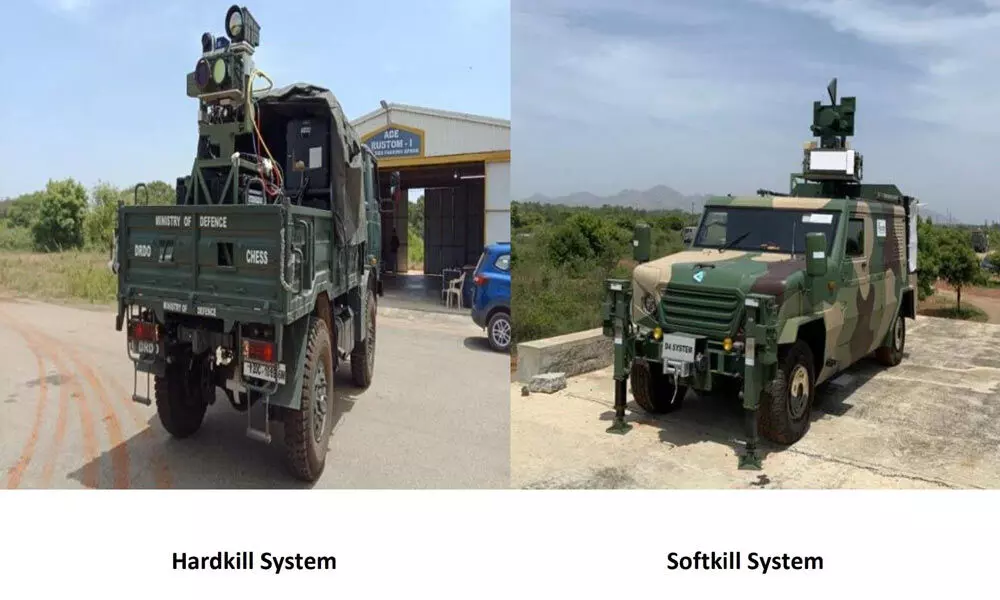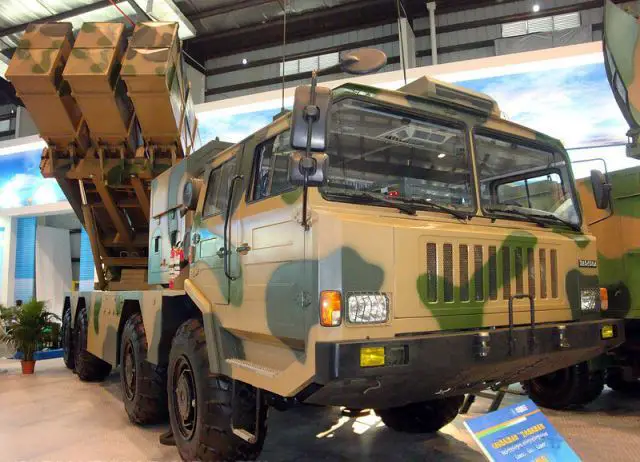SOURCE: AFI

Dhruva Space, a Hyderabad-based company pioneering full-stack space engineering solutions, has successfully secured ?123 crore in its Series A funding round. This marks a significant milestone for Dhruva Space, propelling them towards their goal of becoming a major player in the Indian space industry.
The funding round saw participation from a distinguished group of investors, including the Indian Angel Network Alpha Fund, Blue Ashva Capital, Silverneedle Ventures, BIG Global Investment JSC (BITEXCO Group), IvyCap Ventures, Mumbai Angels, and Blume Founders Fund. Dhruva Space expresses their deep gratitude to the investment community for their belief in the company’s vision.
Continue readingSOURCE: AFI

India’s military is making a strong push towards self-reliance in defense production, with a particular focus on ammunition. Chief of Army Staff (COAS) General Manoj Pande highlighted this strategic shift during a recent address.
General Pande revealed that the Indian Army’s ammunition inventory currently boasts 175 variants. Notably, 134 of these variants are produced indigenously by the Defence Research and Development Organisation (DRDO) and public sector defense companies (DPSUs). This indigenous production is being further bolstered by the onboarding of private companies.
Continue readingSOURCE: RAUNAK KUNDE / NEWS BEAT / IDRW.ORG

In a significant stride towards bolstering its strategic capabilities, India’s Strategic Forces Command (SFC), in collaboration with the Defence Research and Development Organisation (DRDO), recently achieved a milestone with the successful flight test of the New Generation Ballistic Missile Agni-Prime. This achievement marks a pivotal moment in India’s defence strategy, as Agni-Prime is poised to revolutionize the country’s ballistic missile program.
Agni-Prime represents a paradigm shift in India’s missile technology, primarily due to its innovative rail launch capability. According to insiders familiar with the program who told idrw.org that, Agni-Prime will be the first ballistic missile to be operationalized for rail launch, a feature that promises unparalleled mobility and strategic flexibility. This advancement is poised to significantly enhance India’s deterrence posture, particularly in scenarios involving potential threats from neighboring Pakistan and the contested region of Tibet.
Continue readingSOURCE: RAUNAK KUNDE / NEWS BEAT / IDRW.ORG

Hindustan Aeronautics Limited (HAL) has announced a significant shift in the Tejas Mk1A fighter program. Chairman and Managing Director (CMD) CB Ananthakrishnan confirmed that the Uttam AESA Fire Control Radar (FCR) will replace the Israeli ELM-2052 AESA radar starting from the 41st Tejas Mk1A aircraft onwards.
The Uttam AESA FCR represents a major milestone in India’s defence indigenization efforts. Developed by the Defence Research and Development Organisation (DRDO), this indigenous radar has completed 125 flight tests on two Light Combat Aircraft (LCA) Tejas prototypes.
Continue readingSOURCE: RAUNAK KUNDE / NEWS BEAT / IDRW.ORG

The Indian Air Force (IAF) is gearing up to strengthen its air defense capabilities with the procurement of advanced medium-range surveillance radars. This initiative emphasizes the IAF’s commitment to staying ahead of evolving threats, including drone warfare.
The IAF prioritizes acquiring these radars from domestic sources. The key requirement is a detection range exceeding that of currently deployed systems. The ideal radar should offer a primary detection range of at least 200 kilometers and a secondary detection range exceeding 300 kilometers.
Continue readingSOURCE: AFI

In recent years, India has emerged as a frontrunner in developing counter-drone technologies. This rise can be attributed to a confluence of factors, with the 2021 drone attack on the Jammu Air Force Station serving as a stark wake-up call.
The 2021 drone attack on the Jammu Air Force Station, the first of its kind in Indian airspace, exposed a vulnerability in India’s defense system. This incident served as a catalyst, prompting significant investments in research and development (R&D) for counter-drone technologies.
Continue readingSOURCE: AFI

The Indian Space Research Organisation (ISRO) is poised for a critical milestone in its ambitious Gaganyaan human spaceflight program – the integrated airdrop test of the crew module. As reported by ISRO chairman S Somanath, the test is scheduled for launch from Sriharikota on April 24. This crucial experiment aims to validate the functionality of the crew module and its critical components, particularly the parachute system, ensuring a safe return for future astronauts.
This upcoming test marks the second major milestone following the successful TV-D1 mission conducted last year on October 21st. The TV-D1 mission focused on demonstrating the spacecraft’s Crew Escape System’s abort capabilities.
Continue readingSOURCE: AFI

India has issued new Notice to Airmen (NOTAM) previously issued for May 1, 2024 to May 3,2024. This NOTAM restricts airspace over a 985-kilometer area, hinting at a possible ballistic missile test.
It’s important to note that due to the secrecy surrounding military activities, the exact nature of the test cannot be definitively confirmed from this information alone. However, the designated airspace closure is a strong indicator of a potential ballistic missile launch.
Continue readingSOURCE: AFI

The Indian Space Research Organisation (ISRO) has unveiled a new name for its highly anticipated Next-Gen Launch Vehicle (NGLV) program – Surya, the Sanskrit word for Sun. This powerful new launch vehicle promises to revolutionize India’s spacefaring capabilities.
Surya will be propelled by a game-changing LOX-Methane engine, the LME 1000. This engine boasts the ability to deliver a staggering 32 tons of payload to Low Earth Orbit (LEO), nearly triple the capacity of ISRO’s current workhorses.
Continue readingSOURCE: IDRW.ORG.

Indian startup Big Bang Boom Solutions (BBBS) took center stage at the India-Sri Lanka Defence Seminar, igniting a collaborative pathway for innovation in the island nation’s defense capabilities. BBBS presented its next-generation warfare technology to the Sri Lankan Armed Forces, potentially shaping the future of their defense strategy.
BBBS showcased its Anti-Drone Defense System that boasts the capability to detect and neutralize a wide range of drones, including commercially available off-the-shelf (COTS) models and autonomous drones. Employing passive RF sensor technology, it minimizes the risk of false alarms. Furthermore, each component adheres to rigorous Mil Spec 801G standards, guaranteeing reliability in harsh environments.
Continue readingSOURCE: IDRW.ORG.

India’s state-owned defense manufacturer, Advanced Weapons and Equipment India Limited (AWEIL), recently held discussions with Mr. Eyal Ben-Oz, Deputy Defence Attaché of the Israeli Embassy in India. The meeting focused on exploring potential areas of cooperation between the two nations in the defense sector.
The discussions centered on AWEIL’s product portfolio, its vision for defense exports, and identifying potential avenues for collaboration with Israel’s advanced defense industry. This meeting signifies India’s growing openness to international partnerships in the defense sector, aiming to leverage expertise and co-develop cutting-edge technologies.
Continue readingSOURCE: AFI

Local Kashmiri media reported that a drone-like object was discovered near the Line of Control (LoC) in the Balakote sector of Mendhar, Poonch district, Jammu and Kashmir on Tuesday. Officials stated that around 3:15 am, the object was spotted fallen and damaged near the fence, ahead of Government High School Dharati in the Balakote Sector.
An examination of the debris by experts at idrw.org, suggests it might be a landing gear component potentially belonging to an Israeli Searcher Mk II UAV (Unmanned Aerial Vehicle). India acquired Searcher Mk II UAVs sometime after 2000.
Continue readingSOURCE: AFI

According to a report in the Chinese state-affiliated media outlet Global Times, a naval expert has downplayed the threat posed by BrahMos missiles recently acquired by the Philippines. Wang Yunfei, the expert, is quoted as saying that these missiles are primarily used against weaker targets and would be overwhelmed by China’s superior arsenal in a potential conflict.
The BrahMos missile is a supersonic cruise missile jointly developed by India and Russia. The Philippines’ acquisition of these missiles has been seen as a move to bolster its coastal defenses in the disputed South China Sea.
Continue readingSOURCE: AFI

The Indian Space Research Organisation (ISRO) is preparing for a significant milestone in its development of airbreathing propulsion technology. In the next two months, ISRO plans to conduct a scramjet engine test with a targeted flight duration exceeding 300 seconds. This extended test marks a major step forward from ISRO’s previous scramjet experiment.
Spearheading this crucial test is Dr. V Narayanan, Director of the Liquid Propulsion Systems Centre (LPSC). LPSC, a key center within ISRO, plays a vital role in developing and producing advanced propulsion systems for India’s space vehicles.
Continue readingSOURCE: AFI

A recent report by the Stockholm International Peace Research Institute (SIPRI) has cast doubt on the reliability of Chinese weaponry in real-world conflicts. The report, released on March 10, 2024, highlights that nearly 99% of the 300 missiles and drones shot down by Israel, with backing from the US and UK, were based on Chinese military technology. This raises concerns about the effectiveness of Chinese arms in high-intensity warfare.
The report also points towards a decline in Chinese arms exports. SIPRI notes a 23% drop in Chinese arms sales to Sub-Saharan African nations between 2019 and 2023. This decrease is attributed, in part, to quality control issues plaguing Chinese weapons systems. While China remains the primary arms supplier to Sub-Saharan Africa, accounting for 19% of the region’s total imports, these recent trends suggest a shift in buyer preferences.
Continue reading